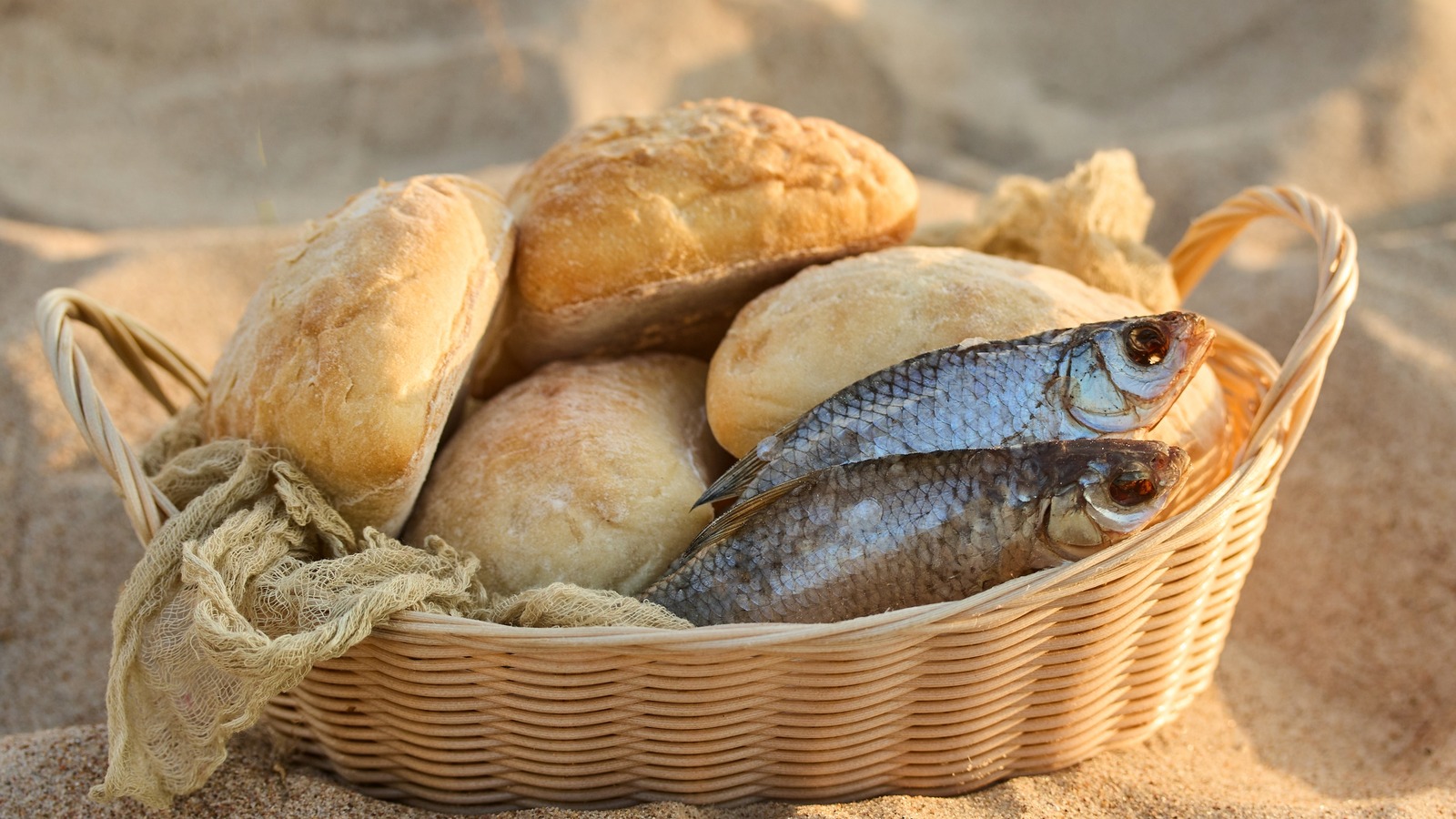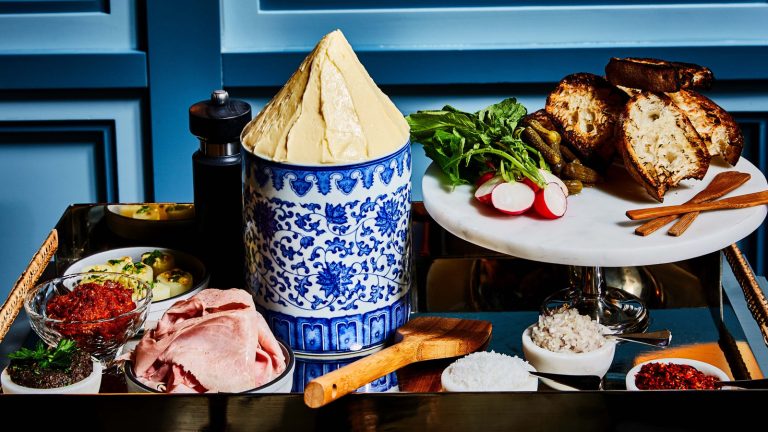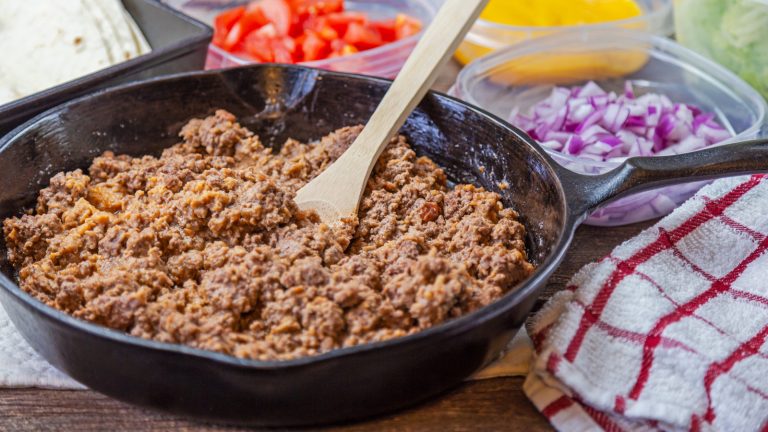Throughout the pages of the Bible, there are dozens of foods and meals mentioned. Each food plays an important spiritual and narrative role and is used as a symbol of greater principles. Meats, fruits, spices, nuts, grains, and other types of food, both real and supernatural, were consumed over the course of the biblical narrative.
Some may be surprising, while some may seem more commonplace, but all of the literal foods are still eaten in present times to varying degrees of regularity. Interestingly, many of the foods that people in biblical times consumed daily are foods that make up the superfoods of today, as the Bible largely takes place in the fertile and resource-rich areas between the Mediterranean Sea and the Persian Gulf. This region contains many prominent bodies of water carrying both fresh and saltwater resources. Today, we’re going to highlight 14 foods that were eaten in the Bible and explore the context in which they were consumed — by whom, on what occasions, with what preparation methods — and some of the symbology behind these foods.
Wild honey
Honey is mentioned both symbolically and literally in the Bible, as in Exodus 3:8 when God mentions “a land flowing with milk and honey” to mean an abundant and plentiful land where he will guide Moses and his people. Honey is revered as a signal that an area is rich with resources so that the people who inhabit it will want for nothing.
In the literal sense, in Mark 1:6, John is said to have eaten both locusts and wild honey (which is different from the regular honey you might see on a grocery store shelf) as he lived in the Judean countryside and baptized people in the Jordan River after they had confessed their sins in order to be forgiven. It is depicted here as both a sweet treat for the taste buds to enjoy and something that can sustain one on a holy mission. In verses 16 and 27 of Proverbs 25, Solomon warns against eating too much honey when one encounters it, or they will become sick, sharing the lesson that too much of a good, sweet, tasty thing can actually be bad when overconsumed. This moment in the Bible seeks to warn against gluttony and promotes the idea of moderation being key.
Bread
Bread is the classic symbol of sustenance, and Jesus refers to himself as the “bread of life,” saying that he is the bread that has come down from heaven, directed and given force by his Father, to give life to the world.
For the seven days following Passover, people were instructed to eat only unleavened bread, that is, bread made without yeast. The Bible instructs that on the first day, all yeast is actually supposed to be removed from the house, and anyone who eats food with yeast in it will be cut off from Israel and the Lord’s bounty. They are also instructed not to work for these days, except to prepare food. This story takes place alongside the greater implications of the Passover ceremony, when God spared all Israelites who smeared the lamb’s blood on their doorways as he struck down the first born child of all Egyptians and even the first born of all their livestock. This unleavened bread also served the purpose of reminding Israelites about the circumstances under which they had to flee Egypt – the bread was unleavened because it had no time to rise as they fled in haste.
Lamb
Both a symbol and a literal meal, the lamb has a powerful and prominent presence in the Bible. In symbology, the lamb is depicted as humble and pure and is often used for sacrifices to the Lord – specifically 1-year-old male lambs with no defects or blemishes for a burnt offering or Passover offering. When the Lord passed over the cities of Egypt bringing judgment, he would pass over the houses with lambs’ blood on the doorways and spare them, hence the name Passover. The symbology of the innocent and pure lamb is also translated to represent the innocence of certain members of mankind, and the Lord as well.
There were also very specific instructions on when and how to eat lamb, as well as who to share it with. People are instructed to eat the meat roasted (not boiled or raw) over a fire with the head, legs, and internal organs included. There were even instructions on how one should dress and stand while consuming the Passover lamb.
Bitter herbs
Bitter herbs were largely called this for symbolic reasons to remind the Israelites and their descendants of the bitter hardships they experienced while in bondage in Egypt. It also refers to real greens, though they were perhaps slightly different than what comes to mind when we think of herbs today. The Bible does not specify, but these bitter greens likely included dandelion, chicory, watercress, endive, and wild lettuces that grew in Egypt and were readily available in the surrounding regions.
These herbs appear in sections about the Passover, and people are instructed to eat them ceremonially along with the lamb and unleavened bread. Each of these ingredients incorporated into the meal has a different symbolic importance. It is interesting to note not only the significance of the bitter herbs at Passover, but also the generality of the phrase, as these herbs would vary between terrains as followers lived or traveled through different regions. Unlike the unleavened bread, which would not be allowed to rise, or the lamb, for which very specific instructions were provided for how to prepare and eat it, these bitter herbs are allowed some flexibility — likely because followers had much less control at the time over what herbs grew best in their region and what specifics they could access.
Gourds
In an interesting section of the Bible highlighting the care that must be taken when using an area’s natural resources, a servant of Elisha mistakenly foraged poisonous gourds and added them to a stew being prepared for the people of the famished Gilgal region. People immediately realized, saying, “Man of God, there is death in the pot!” Elisha then instructs his servant to add some flour to the pot and feed it to the people again, and it is said that there was then nothing poisonous left in the pot.
The symbology here is powerful, as the mistaken servant’s addition of the gourd into the stew was not intentional but still caused great harm. He was trying to help feed his fellow prophets during a famine, but alas, they were still as sick as if he had poisoned them on purpose. When Elisha follows God’s bidding to add a specific ingredient to the pot, it is rendered harmless, demonstrating the concept that following the word of the Lord can help maintain prosperity.
Olive oil
Olive trees and their fruits are a powerful symbol in the Bible, with the branch of the tree representing peace and the oils being an incredibly common superfood. Olive oil was mixed into hearty loaves of life-sustaining bread and was often brushed on top as well. It was a highly versatile substance that was also used in oil lamps to provide illumination – another symbol. Olive oil was incredibly important to biblical societies and was often (if not always) included in tithes along with money, grain, and wine.
Plentiful lands were described as being rich with the substance, and it was mentioned in Proverbs as something that wise people store up along with their main foods. It was not considered an unattainable luxury, but surely an ingredient of quality that one would be generous with when offering food and gifts to favored guests or people they wished to please. Though olive oil was not necessarily infused in the Bible, today, there are many delicious infusions for your extra virgin olive oil to take that bottle to the next level.
Pomegranates
The Bible does not specifically explain how and when pomegranates were eaten, but they were described as something to be enjoyed. Like fields of grain, olive oil, and honey, pomegranates are listed as one of the many ample resources promised to the Israelites after their 40 years in the desert when they arrive to the Promised Land and follow God’s word.
They are also highly symbolic and a common motif in the Bible. They are added as adornments to priestly garments, as decoration on the pillars of Solomon’s temple, and are considered to be a symbol of love, beauty, and fertility. Pomegranates are a beautiful, complex fruit with a unique form and powerful flavor and pigment, so it makes sense that they, over other fruits, would be used as a symbol in ornate temple decorations and to represent abundance in a world where such luxurious items were rare and coveted far more than they are today. This adornment further cements their association in sacred contexts with fruitfulness and the glory of God.
Figs
Figs are often eaten in the Bible, and a distinction is made between regular figs and sycamore figs. The latter is smaller, sweeter, and not self-pollinating like many other fig species. They instead rely on fig wasps for pollination. In Judges 9:10, the trees, after deciding to seek a king for themselves, request the olive tree to be their king. It refuses, so the trees turn to the fig tree and ask it the same thing. The fig tree also declines, questioning the others: Should I sacrifice my fruits to be the ruler of the trees?
This refusal is symbolic of the humility of the food-staple-providing fig tree. The lack of desire to rise up above the rest shows a sense of unity and equality between the trees and plants of the area. It’s not difficult to translate these traits to the admirable human qualities of humility, fairness, and social awareness.
Grapes
Grapes are mentioned many times in the Bible, both as a tool to teach lessons and as a fruit to be eaten and made into juices and wines. One such mention of the eating of grapes is in Jeremiah 31:29-30 where the Lord discusses the implications of eating sour grapes, or rather, committing sins. Initially, the phrase says that when the parents eat sour grapes, or sin, the children will inherit these sins. Later, this is modified to express the sentiment that whoever sins — or eats the sour grapes — will pay the price for their own actions. The grapes here serve as a placeholder to express the idea that each person holds responsibility for their own deeds and that no person will inherit the misdoings of another.
Grapes, like the people in the previous metaphor, can also undergo transformations into entirely new forms, like jam or wine, which still maintain the tartness and many other features of the grapes they came from. This parallel draws a clear line between humans and grapes and their many varied forms as they grow and change.
Fish
In one of Jesus’ famed miracles, he fed a group of 5,000 people with five loaves of bread and two fish. Fish in general are mentioned many times throughout the Bible, and it is safe to assume that they provided a solid source of sustenance for many people in biblical times. The region that the Bible takes place in (much of which was in modern-day Israel and Palestine) has many bodies of water that could have been sources of these fish.
What kind of fish was eaten by Jesus and his followers exactly is not certain. However, based on archaeological findings of carp and tilapia bones at excavations of the Sea of Galilee, it’s believed to be quite likely that these two types of fish were eaten frequently during this period. Though they probably weren’t eating them in flaky fish tacos, these fish, like they are today, were likely a key food staple for these seaside communities.
Calves
Calves were both offered as sacrifices for sins and eaten for feasts. A fattened calf is mentioned in multiple chapters of the Bible and is the subject of many words of wisdom and warning. One such point was in Proverbs 15:17, when it’s said that it is “Better a small serving of vegetables with love than a fattened calf with hatred.” This sentiment shows the value of the meat of a calf as it is compared to a small serving of vegetables, showing that it is better to serve something of less value with love than it is to serve something of higher value with hatred.
Calves were also used as offerings and were clearly valued as creatures of high importance – at least monetarily, if not necessarily revered spiritually. Apart from preemptive offerings for future good fortune, they were also consumed for celebrations, as in Luke 15:23 when a man’s son came home after long last. Despite committing actions the son felt he should be ashamed of, the father was overjoyed to see him and expressed his genuine generosity during this moment of excitement when he slew the calf for the feast, showing that calves were often used as tokens of celebration.
Beans and lentils
Nearly always mentioned together, beans and lentils are used as a common sustenance food and ingredient in making bread. In 2 Samuel 17:27-29, David and his people are given beans and lentils along with other essentials like bedding, flour, pottery, honey, and cheese to replenish them after their journey.
When viewed among the other items of necessity, the importance of these legumes to the people of biblical times becomes clear. While today we might reach for modern food like a protein bar or sandwich, beans and lentils are packed with fiber, protein, vitamins, and minerals and would be a key element of any whole-foods recovery meal. Beans and lentils might not necessarily be lauded today with the hype they deserve, but they should certainly be considered one of the most classic, versatile, and nutritious superfoods. If you’re looking to get more of these underrated superfoods, there are tons of tasty bean recipes, such as a chunky slow cooker split pea soup or a Spanish-inspired tuna salad with white beans and oranges.
Cakes
Both fig and raisin cakes are mentioned in the Bible and used as gifts, bribes, and offerings. The raisin cakes are even called sacred. In 2 Samuel 6:19, David “gave a loaf of bread, a cake of dates, and a cake of raisins to each person in the whole crowd” as a celebration after the Ark of the Covenant was built. He offered these cakes to everyone, both men and women, to reward them for their help.
There is some debate about the translation of “cake of dates,” as the original, literal translation says something much different. But as with the events of many historical texts, which not only used antiquated ways of speaking in their own language, but are then translated into the desired language of the readers, there is always some linguistic uncertainty. As languages shift over time, the meanings of words can shift drastically and sometimes take on entirely different definitions that are not always written down. That said, it is believed that the cake of dates was in fact the second gift, which makes sense as the other two baked goods given in that moment were also cakes of main food staples.
Quail
In Psalms 105, which is a somewhat complex section describing the Ten Plagues of Egypt, there is a moment when the Lord is granting his followers’ requests and giving them gifts of the natural world. “They asked, and he brought them quail; he fed them well with the bread of heaven.” Later, he opens up a rock, and water flows out “like a river in the desert.”
In these moments, God is rewarding his followers with gifts of both literal and symbolic meaning. The quail will certainly feed the hungry people, and the water will surely hydrate them. And referring to the quail as “the bread of heaven” draws a closer symbolic tie between the small fowl and the actions and holiness attributed to God. While eating whole quail is definitely less common today when there are larger, meatier birds available, they’re still a tasty, protein-rich addition to many recipes. For example, you can give your instant ramen a unique textural upgrade with canned quail eggs.





